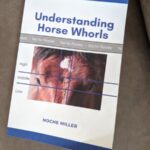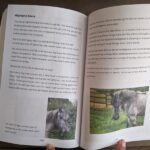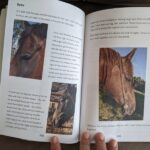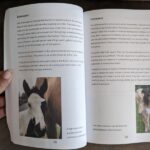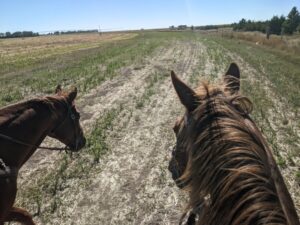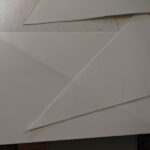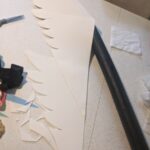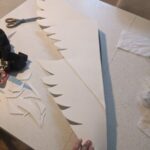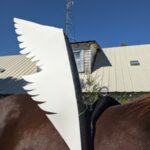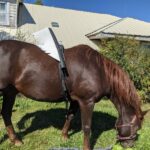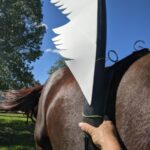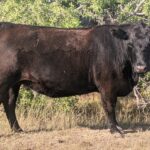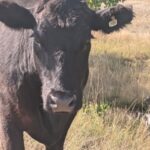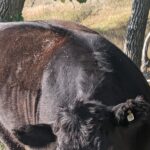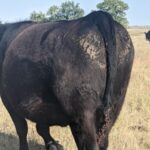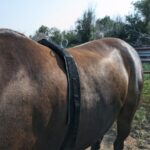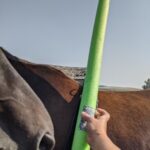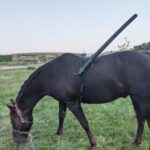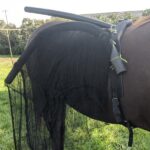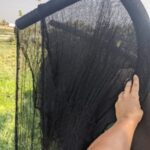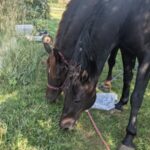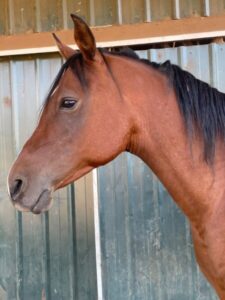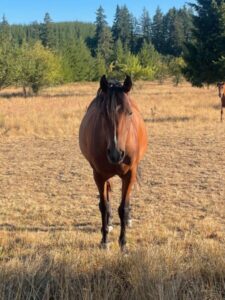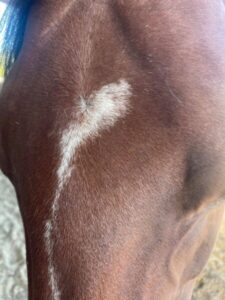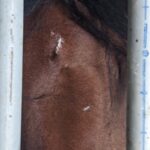I’ve been looking at whorls on horses for decades. I’ve run cattle for not quite that long.
For some reason it never occurred to me to look at whorls on the cattle until recently. Even though so much of the good information we have about whorls came from studies on cattle. I had talked about them, looked at them, just not in an in depth sort of way.
Now I am actively trying to improve my cattle whorl knowledge. There is some really good information out there. I’m reading everything I can find and watching videos. Then taking all of that out to the pasture and looking closely at cattle.
The same ways I learned about horse whorls for the most part. Horses are different of course. We can ride them and see how they move and think. Most cattle aren’t ridden and the things we look at have more to do with milk quality, fertility, and health.
After watching some video by Steve Campbel I went out to check tanks and walked through the herd to see if I could find the markers he had talked about in real life.
This heifer stood out to me.
First of all she has a high ‘pancreatic’? line. I think that’s what it was called. It is a sign of pregnancy, health, and so on. If I remember right. Interestingly it was supposed to show up late in pregnancy. She can’t be very far along in pregnancy. The bulls were turned out in the middle of June. So what is it showing here?
Her build is even to slightly down hill. A cow should be lower in front than behind. It shows high fertility. Her hindquarters slope nicely down from the hip bones to the pelvic pins. The tail doc looks low and rounded. More ease of calving.
Her forehead whorl is a single, mostly centered. That shows a lick of extremes in temperament that we can see from the whorl. Some people say a nice easy going temperament. In horses the head can show lots of extremes that the whorl doesn’t. In cattle?
Her poll looks to be flat, not a sign of good fertility. I think the hair could be flattened down making it look that way and there might actually be a bump there. Apparently we want a small pointy bump. More fertility I think?
Her nose is broad. This one I remember because it was so interesting. The nose is about the same width of the pelvic pins in back. A wide nose shows a wide pelvis for ease of calving.
The front legs are wide at the knee then narrow sharply to the cannon bone, then slowly widen out to the hooves. I think. Most of the cows I looked at seemed to be shaped like this. Either I need to refine my ability to recognize this considerably, which I definitely do, or it could be a sign that the cattle are nicely bred. This is supposed to be a sign of tender meat. A good thing in beef cattle.
Her back is flat between the hip bones. This was good. Fertility? Ease of calving? Or maybe it was a sign she’d be a good doer? These things are so hard to remember. Learning any new skill takes lots of time and effort! we can’t read or watch something once and think we’ll have it down!
She is flat and broad all the way down the back. Her back whorl is just in front of her withers. Another good thing. Rich milk I believe?
I didn’t get a very good picture of her from behind. We can’t see the wrinkles in the skin over the udders. A sign of good rich milk and tenderness. There are whorls on either side of the hindquarters, more rich milk.
I’m going to try to keep a close eye on this heifer and see what sort of calf she raises, see how she does calving, see if she somehow is bred earlier than the other cows.
Does anyone here like to look at cow whorls? I would love a critique of my critique. It would also be great to hear what other people look for in cows.
